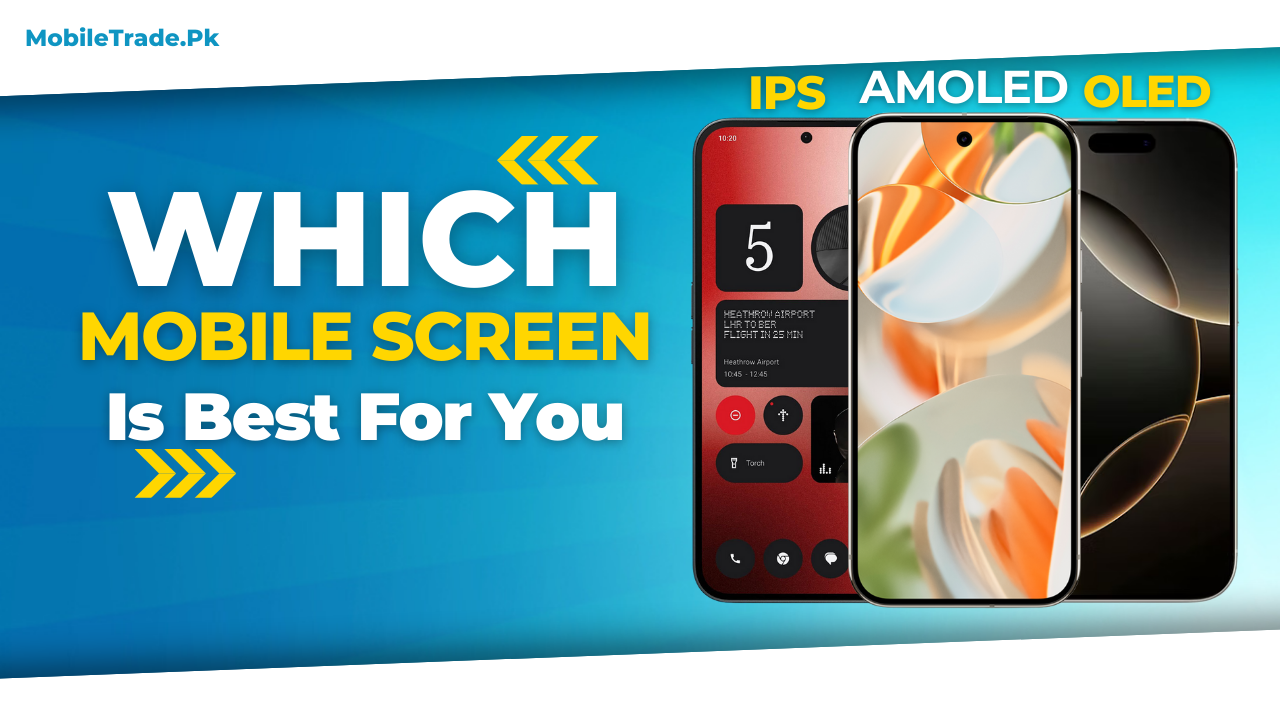📱 AMOLED vs OLED vs LCD – What’s the Difference Between These Screen Types?

Introduction
When buying a new smartphone, one of the most important specs to look at is the display type. You’ve probably seen terms like AMOLED, OLED, and LCD thrown around a lot. But what do they actually mean? And which one is better for gaming, media, and daily use?
In this blog, we’ll explain the key differences between AMOLED, OLED, and LCD screen technologies, their pros and cons, and which one you should choose in 2025.
📊 Quick Comparison Table
| Feature | LCD (IPS) | OLED | AMOLED |
|---|---|---|---|
| Full Form | Liquid Crystal Display | Organic Light Emitting Diode | Active Matrix Organic LED |
| Backlight | Yes | No | No |
| Contrast Ratio | Good | Excellent | Excellent+ |
| Colors | Natural | Vivid | Very Vivid |
| Black Levels | Dark Grey | Deep Black | Perfect Black |
| Power Efficiency | Less efficient | More efficient | Most efficient |
| Cost | Cheaper | Moderate | Expensive |
| Lifespan | Longer | Moderate | Slightly shorter (burn-in risk) |
💡 1. LCD (IPS LCD)
How it works:
LCD stands for Liquid Crystal Display. It uses a backlight that shines through a layer of liquid crystals and color filters to create the image you see. The most common type in phones is IPS LCD (In-Plane Switching).
Pros:
- Natural-looking colors
- Bright in outdoor conditions
- Cheaper to manufacture
Cons:
- Blacks appear greyish
- Lower contrast
- Less battery efficient
Best for: Budget smartphones, entry-level devices, and people who prefer neutral colors.
🌈 2. OLED (Organic LED)
How it works:
In OLED screens, each pixel emits its own light – no backlight needed. This allows for deeper blacks and thinner displays.
Pros:
- Infinite contrast ratio
- Thin and flexible design
- Energy-efficient (especially with dark mode)
Cons:
- Expensive
- Slight risk of burn-in with long use
- Slightly reduced brightness outdoors compared to LCD
Best for: Flagship phones, people who love deep blacks and punchy colors.
⚡ 3. AMOLED (Active Matrix OLED)
How it works:
AMOLED is a more advanced version of OLED, with an “active matrix” that allows faster pixel switching and better power efficiency. Almost all high-end smartphones use AMOLED displays today.
Pros:
- Rich, vibrant colors
- Best-in-class contrast and deep blacks
- High refresh rates (120Hz/144Hz)
- More battery-friendly than OLED/LCD
Cons:
- More expensive than LCD
- Risk of screen burn-in (rare in newer models)
Best for: Premium phones, gamers, content lovers, and users who want the best display quality.
🆚 So, AMOLED vs OLED vs LCD – Which Is Better in 2025?
| Need | Best Option |
|---|---|
| Budget-Friendly | IPS LCD |
| Best Colors & Black Levels | AMOLED |
| Good Battery + Picture Quality | OLED / AMOLED |
| Gaming & Media | AMOLED (120Hz+ refresh rate) |
If you’re buying a phone in 2025, AMOLED is considered the gold standard in displays, especially in mid-range and premium phones. Even budget phones are starting to get AMOLED panels.
🏁 Final Words
In summary:
- LCD: Great for budget users and outdoor visibility
- OLED: Offers deep blacks and better contrast
- AMOLED: Superior in almost every way – great for gaming, streaming, and overall visuals
Understanding your screen type helps you make the right purchase decision – because what you see is what you get.





I was recommended this website by my cousin I am not sure whether this post is written by him as nobody else know such detailed about my difficulty You are wonderful Thanks